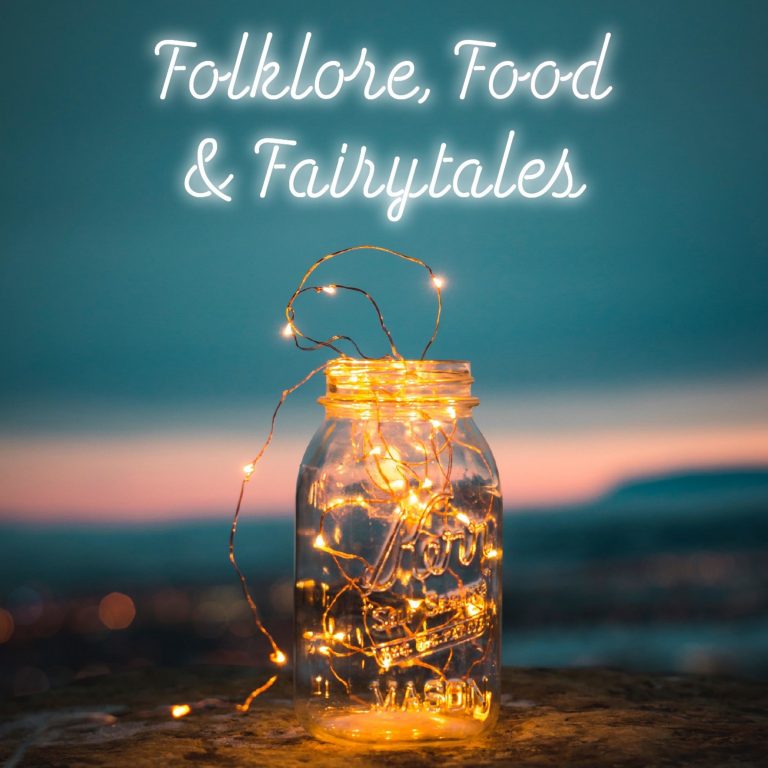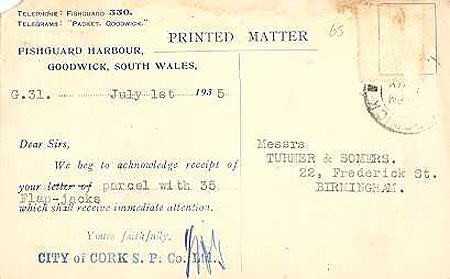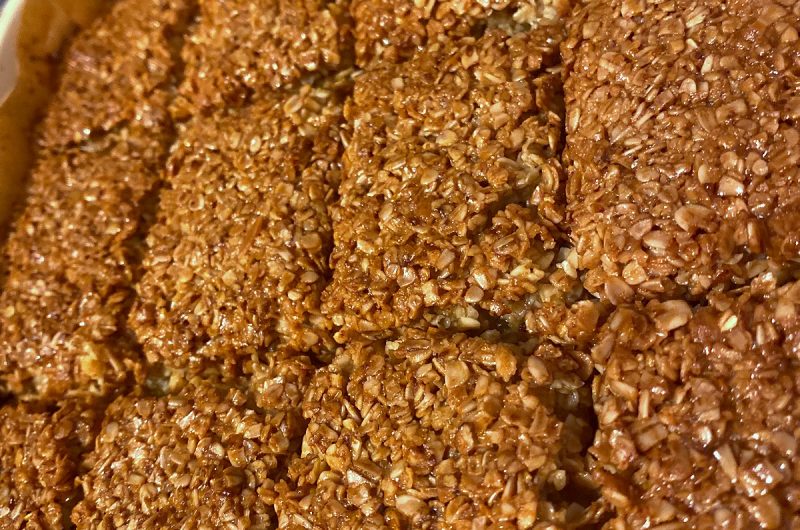In which we find out how giving away your lunch can find you a bride and win you a kingdom and how relevant that is to a delicious apricot flapjack. Jesper and the Hares is essentially a Jack tale who’s hero just happens to be named Jesper.
In which we find out how giving away your lunch can find you a bride and win you a kingdom and how relevant that is to a delicious apricot flapjack.
Jesper and the Hares is essentially a Jack tale who’s hero just happens to be named Jesper. Jesper is wily, clever and tricky and has two foolish elder brothers. He also wins the day though a combination of trickery and generosity to those more vulnerable and needy than himself. I don’t think we need to worry about a spoiler alert, there will be no tragedy tales here.
We also talk about the significance of grain and the harvest in fairy tales and how important this was to the original audience of these tales.
The recipe for this week is apricot flapjacks, the oat based bar as opposed to the American/Canadian pancake. It’s an unusual recipe as it has a squidgy filling layer of apricot rather than apricots chopped through.
You can use a different dried fruit if you’re not keen or just leave it out altogether but it does add a touch of luxury and sharpness to cut though the sweet oat mixture.
Its great for breakfast or as a snack and would be perfect to give to any old ladies that you happen to come across when out walking even if you’re not trying to win a princess.
You can find the recipe here as well as some further information about the history of flapjacks and the story.

Jesper is wily, clever and tricky and has two foolish elder brothers. He also wins the day though a combination of trickery and generosity to those more vulnerable and needy than himself. I don’t think we need to worry about a spoiler alert, there will be no tragedy tales here.
Food Makes Everything Normal
Food is important in this tale as it is in most, even it just demonstrates normal in the face of the fantastic. Jesper’s generosity with his lunch is an excellent example, as he is reassured he will get better food later. It might win him a magical whistle but with only a slight delay to his appetite.
Sorting grain is another fairytale trope that appears with some regularity. You could even say that the ability to sort bad food from good demonstrates judgement of some kind. In this case, its one of the standard impossible tasks given to a suitor who attracts the scorn of the princess’s parents. Grain is also a symbol for food, the desire for a good harvest that forms the root of many a fairytale.
The Perfect Cheese & Onion Sandwich
So today’s recipe is either going to have to be hare based, grain based or given Jesper’s tastes, a recipe for a really good cheese and onion sandwich. I couldn’t even think about suggesting harm to the noble hare, so that was out. The recipe for a really good cheese and onion sandwich (1 fresh crusty cob, butter, thick slices of really sharp cheddar and slices of strong white onion, preferably slightly squashed, wrapped in cling film and sold in a Black Country pub that does excellent beer but is limited in it’s food menu) is either too short or much too long.
I’d have to break down the history of bread and cheese and find the first time anyone suggested the combination. No-one has that much time. Genuinely, I’d rather just eat one, along with some excellent beer or cider so the recipe is going to have to be grain based.
The Risotto that shall not be Named
I once ate a barley risotto which I don’t wish to discuss further. Suffice it to say that Nigella will always be my queen, but occasionally our tastes do not match. Oats are our last remaining choice, wheat being just too general and I’m not up for history of bread this week. We’ll get there eventually but today is not that day. I can think of three palatable things to make from oats: oat & raisin cookies, flapjack and porridge.
No-one can feel excited about about porridge when the weather is this pleasant. I don’t have my own secret recipe or even one I could recommend that doesn’t just consist of following the one on the packet and then drowning it in cream and adding oodles of brown sugar.
Flapjack is another kettle of fish (or basket of snacks). I have an excellent, if slightly unusual recipe that I first had as a child and absolutely love. (I completely forgot the existence of oatmeal and raisin cookies until I mentioned them just now and I’ve done the flapjack research so sadly no cookie recipe today.)
Finally Flapjack or Just Oats Mainly
Lets start with the biggest ingredient and the one with an actual link to the story: oats. Oats are often a feature in the stories of Northern Europe as they are less susceptible to damage by heavy rainfall and lack of sun than grains such as wheat. They were the last of the major cereal grains to be domesticated, around 3,000 years ago in Europe, and apparently originated as weeds that grew within cultivated fields of various other crops.
One of many reasons why people were slow to embrace oats is because they go rancid very quickly, due to the presence of natural fats and a fat dissolving enzyme present in the grain. As a result, they have to be processed immediately after harvesting.
In Samuel Johnson’s dictionary, oats were defined as “eaten by people in Scotland, but fit only for horses in England.” A Scotsman’s retort to this is, “That’s why England has such good horses, and Scotland has such fine men!”
Flapjack is Older than You Might Think
The other ingredients in this recipe are the ones that actually make it a treat including the golden syrup. (a note re the syrup, if you can’t get it don’t replace with corn syrup please. It won’t work here.) I thought flapjack was centuries old, a delicious hearty snack that your average person might eat when having to be out working all day in all seasons.
If you have ever googled it you’ll know it isn’t and be bemused because it seems to be two different things. Flapjacks can be either a delicious oaty bar shaped snack or a type of pancake not connected with oats at all. The pancake version has a much more illustrious history, being mentioned in 1620 as noted in the OED. Shakespeare himself had people snacking on them in Pericles, Prince of Tyre that he wrote in 1607.
But Also Very Modern Actually
To return to the oat-based bar, the OED has it mentioned in print for the first time in a much more prosaic 1935. The recipe appears in Margaret Struan’s Popular Home Cookery and I have no idea how good it is. Sadly, I was unable to obtain a copy but I feel sure it was excellent. I hate to question the OED but I have found mention of flapjacks in a receipt from a Fishguard-Cork motor ship in 1935.
Its unlikely in this context to be the pancakes so it suggests that the oat bars had been going for a while before they appeared in a cookbook. I can’t imagine that Birmingham was at the foreguard of flapjack making (although I may be doing the city a disservice) and that was where the receipt said they were from.

The recipe below is of more recent vintage but it definitely existed before 1989 because that’s when I first tried one. This recipe has a slight twist on the traditional with a squidgy filling layer of apricot rather than apricots chopped through. You can use a different dried fruit if you’re not keen or just leave it out altogether but it does add a touch of luxury and sharpness to cut though the sweet oat mixture.
Its great for breakfast or as a snack and would be perfect to give to any old ladies that you happen to come across when out walking even if you’re not trying to win the hand of a princess. Please though, if you can’t get golden syrup don’t try and make these. Corn syrup just won’t work in this instance. I’m a big fan of substituting ingredients normally but I’d suggest just finding another recipe without syrup. Nigella for example does an excellent oat based breakfast bar that uses condensed milk instead.
Apricot Flapjack
12-16
servings20
minutes30
minutesIngredients
200g dried apricots, roughly chopped
2 tbsp lemon juice
100g light brown soft sugar
200g unsalted butter, plus extra for greasing
350g rolled porridge oats
½ tsp fine sea salt
100g golden syrup
Directions
- To make the filling, put the apricots and lemon juice and 50 ml of water in a medium pan. Cook over a medium heat, stirring occasionally, until the apricots soften and a thick mixture forms (12-15 minutes). If the mixture is catching, add a little more water. Allow to cool a little on one side.
- Meanwhile, preheat the oven to 175˚C, Lightly grease and line a 20cm square baking tin with baking parchment. Mix the oats and salt together. In a pan, melt the butter, golden syrup and sugar together over a low heat. Mix into the oat mixture to form a coarse dough.
- Press ½ the dough into the bottom of the lined tin. Spread the apricot compote evenly over the dough. Carefully top with spoonfuls of the remaining dough, spreading out roughly with the back of a spoon to make an even layer. Bake for 25-30 minutes, Cut into 12-16 bars or squares. then cool completely in the tin.
Notes
- If you prefer a crispier flapjack then cook at 190 degrees C rather than 175. Temperature is more important than time here.
- You can change this to a tinned fruit compote or change out for a different soft dried fruit like prunes for example. You could even use stewed apple or plums.
Further Reading
https://www.oed.com/view/Entry/71106?redirectedFrom=flapjack#eid
Davidson, Alan; Jaine, Tom; Vannithone, Soun (2006) [1999], The Oxford Companion to Food (2nd ed.), Oxford University Press, p. 306
M. Struan · Popular Home Cookery · 1935.
https://en.wikipedia.org/wiki/Oat
https://www.theguardian.com/lifeandstyle/wordofmouth/2011/mar/10/how-to-cook-perfect-flapjacks]
The Violet Fairy Book, Andrew Lang
If you would like hear me tell the story, please listen to my podcast above. There is more information on my about me page if you’d like some further reading.


